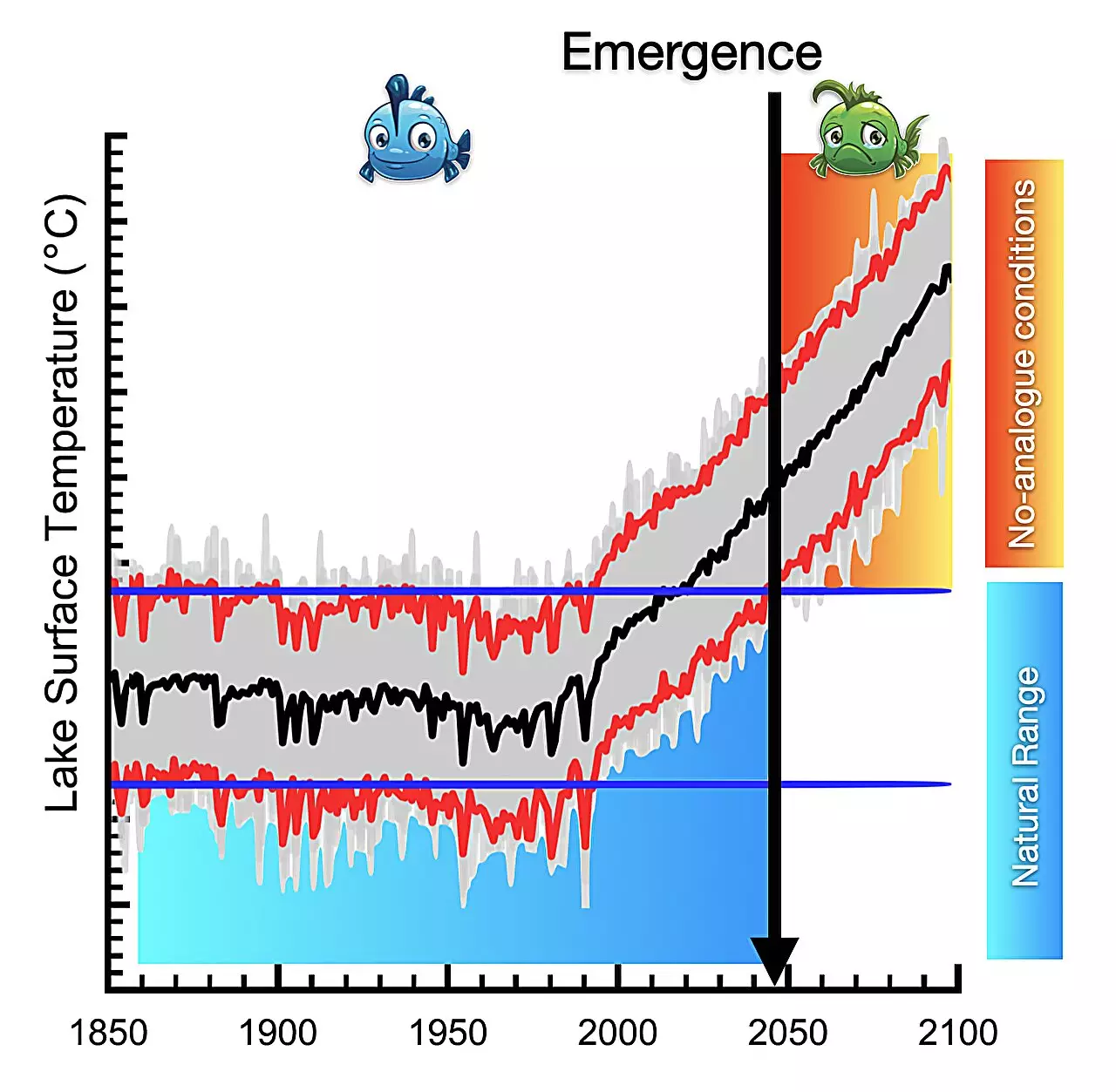Lakes represent one of Earth’s most vibrant ecosystems, teeming with life and vital ecological functions. However, mounting evidence reveals that these precious bodies of water are on the brink of a significant transformation due to climate change. A groundbreaking study recently published in *Nature Geoscience* sheds light on the impending plight of lakes, predicting that unless we curb our greenhouse gas emissions, lakes across the globe will experience unprecedented warming by the end of this century. This new research not only underscores the urgency of the climate crisis but questions the future of aquatic biodiversity and ecosystem health.
Innovative Methodologies in Climate Modeling
At the heart of this research is the Community Earth System Model (version 2), an advanced climate simulation tool that integrates atmospheric dynamics with lake thermodynamics. Employing an ensemble approach, the research team executed 100 distinct simulations spanning from 1850 to 2100 CE. The use of ensemble modeling allows scientists to capture a range of natural variability while isolating anthropogenic influences. This robust methodology provides a clearer picture of future lake conditions and the catastrophic implications of rising temperatures—an invaluable asset for researchers and policymakers alike.
Dr. Lei Huang, the study’s lead author, articulates a sobering conclusion: global lake temperatures are projected to exceed historical norms, initiating what experts term “no-analog conditions.” Such a shift implies that lakes will undergo changes that have not been seen before, compounding stressors for aquatic life and challenging existing management practices.
Regional Variations: A Global Perspective
One striking aspect of the study is the regional differentiation in lake warming trends. Tropical lakes, often rich in biodiversity, are predicted to be the first to succumb to no-analog conditions as global temperatures escalate beyond 2.4°C from pre-industrial levels. This poses a severe threat to numerous species that rely on stable environments for survival. While some aquatic organisms have the potential to migrate vertically within the water column to escape rising surface temperatures, many others are confined to specific ecological niches and cannot adapt swiftly enough to the changing climate.
In contrast, high-latitude lakes exhibit a delayed response to warming due to stratification processes that shield subsurface environments from immediate temperature changes. This disparate rate of temperature increase signifies an urgent need to focus on tropical lake ecosystems, where rapid climate changes could unleash devastating impacts.
The Unraveling Ecosystem: A Cautionary Tale
The implications of these findings for lake ecosystems are profound. With lake organisms exhibiting limited ability to migrate to more temperate locales compared to their terrestrial and marine counterparts, the disruption of these biodiverse habitats may trigger a domino effect throughout the food web. Dr. Iestyn Woolway’s observations on the synchronous emergence of no-analog conditions in the subsurface of tropical lakes underline the multifaceted challenges created by climate-induced changes, including frequent mixing events that exacerbate warming depths.
Ecological services provided by lakes—such as water purification, flood regulation, and carbon sequestration—are at significant risk. With these services compromised, human communities that depend on healthy lake ecosystems may also face dire consequences, reinforcing the interconnectedness of our environment and economic well-being.
Future Directions: The Call for Global Action
The study raises an essential clarion call for prioritizing adaptive measures and climate change mitigation strategies tailored for lake systems. Understanding the timing and nature of no-analog emergence is imperative for crafting effective policies aimed at preserving these vital ecosystems. Moreover, furthering research into the impacts of climate change on specific lake regions is critical as we strive to pinpoint at-risk areas and implement targeted conservation efforts.
As stewards of the planet, we must acknowledge that our actions today will reverberate across generations. Limiting greenhouse gas emissions and fostering sustainable practices will not only aid in averting dire scenarios painted by studies like this one but also protect the rich tapestry of life that thrives in our lakes. The future of our lakes, and indeed ourselves, rests on the choices we make now.


Leave a Reply